Feeding frenzy
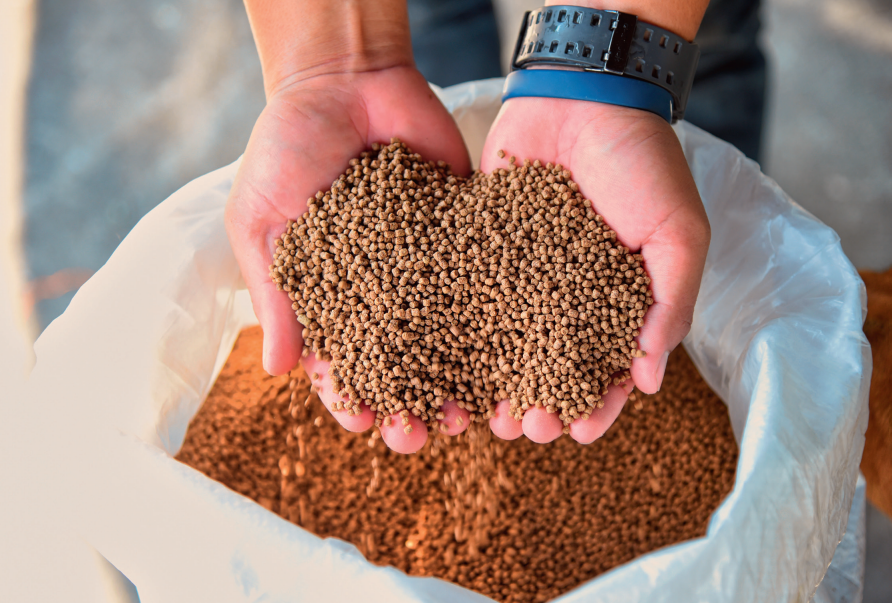
High feed prices could be set to continue in 2024, experts say. Fiona Nicolson reports
At the end of 2022, Rabobank’s Global Animal Protein Outlook for 2023 revealed that global grain and oilseed prices had almost doubled between May 2020 and May 2022, due to increased demand, concerns about supply and increased geopolitical uncertainty. Some of the contributing factors included drought caused by La Niña (the cool phase of the Pacific Ocean climate cycle, El Niño) and the war in Ukraine.
This caused a rise in the cost of plant-based aquafeed, presenting a challenge for aquaculture operators. And now, at the start of 2024, aquafeed costs could be set to rise again.
Dr Enrico Bachis, Market Research Director at IFFO, an international trade organisation for the marine-ingredients industry, says: “Based on historical patterns, we have observed that feed trends reflect political, market and environmental turbulence. During 2022 to 2023, geopolitical issues, energy price increases and limited raw materials led to an increase in feed prices of 30%. This suggests that the prices of key commodities are likely to further increase in 2024.”
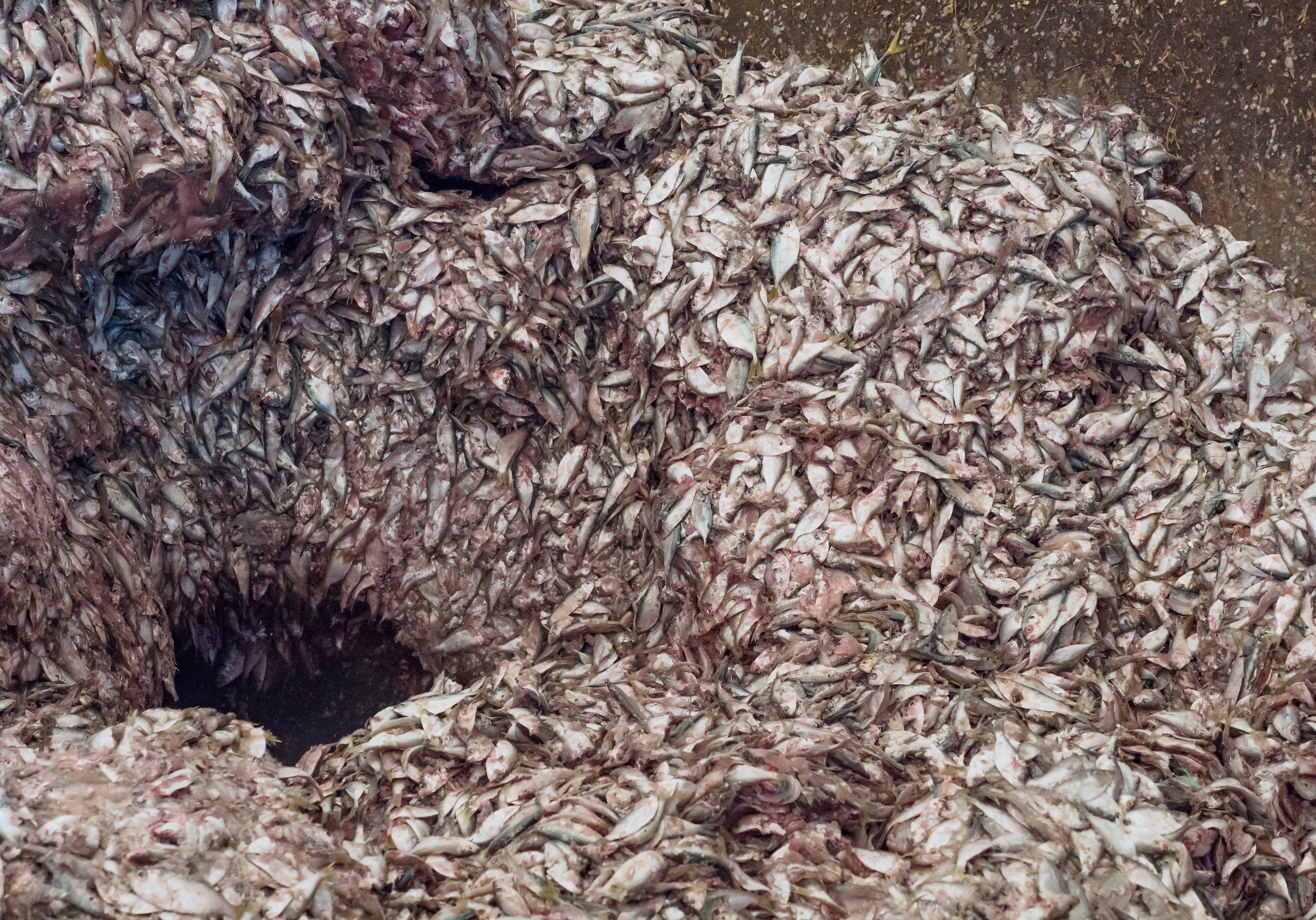
Fishmeal bin
In its outlook for 2024, Rabobank also pointed to some continuing challenges. When reflecting on aquafeed, its key takeaways focused on the impact of weather and on volumes of fish caught, stating:
“El Niño is likely to persist through H1 2024 and price normalisation of fishmeal depends on catch rates.”
According to IFFO data, as much as 20% of the world’s fishmeal and fish-oil production comes from Peru. But the first anchoveta fishing season of 2023 in the north-central zone was cancelled due to sea conditions.
Louise Buttle, Global Key Account Manager at dsm-firmenich, anticipates that high aquafeed prices could therefore continue: “Market prices for aquafeed will continue to be relatively high in 2024, especially for those species relying heavily on marine protein and oil, due to El Niño.
“The outlook for H1 2024 will be a continuation of relatively high prices for fishmeal and especially fish oil globally, driven by lower fishing quotas and yields in the anchoveta fishery of Peru.
“Much of the aquafeed sector remains exposed to raw-material price volatility.”
Chief Executive of STIM Carl-Erik Arnesen takes a similar view: “Aquafeed prices will be driven by fluctuations in prices of different raw materials. The availability of European vegetable feedstuff sources will be affected by the drought seen in many areas. Effects of this will probably be seen in the first two to three quarters of 2024. The status of El Ninõ in South America will in turn affect global fish oil and fishmeal prices. And as China is increasing its use of fossil fuels, it can push processed raw materials into the market at a higher rate, probably also contributing to fluctuations in raw-material prices. If the different raw-material groups follow the same trend in the same periods, it will be a bumpy ride for feed prices in 2024.”
There are signs of improvement, however. Reflecting on Peru’s anchoveta fishing, Bachis says: “The second season is continuing slowly but steadily. In theory, this will go on until the quota is fulfilled, unless signs of spawning are detected in the anchovy.”
He adds: “The second half of 2024 will hopefully see a classical post-El Niño rebound in catches and production of marine ingredients, and therefore some relative normalisation of fishmeal prices.”
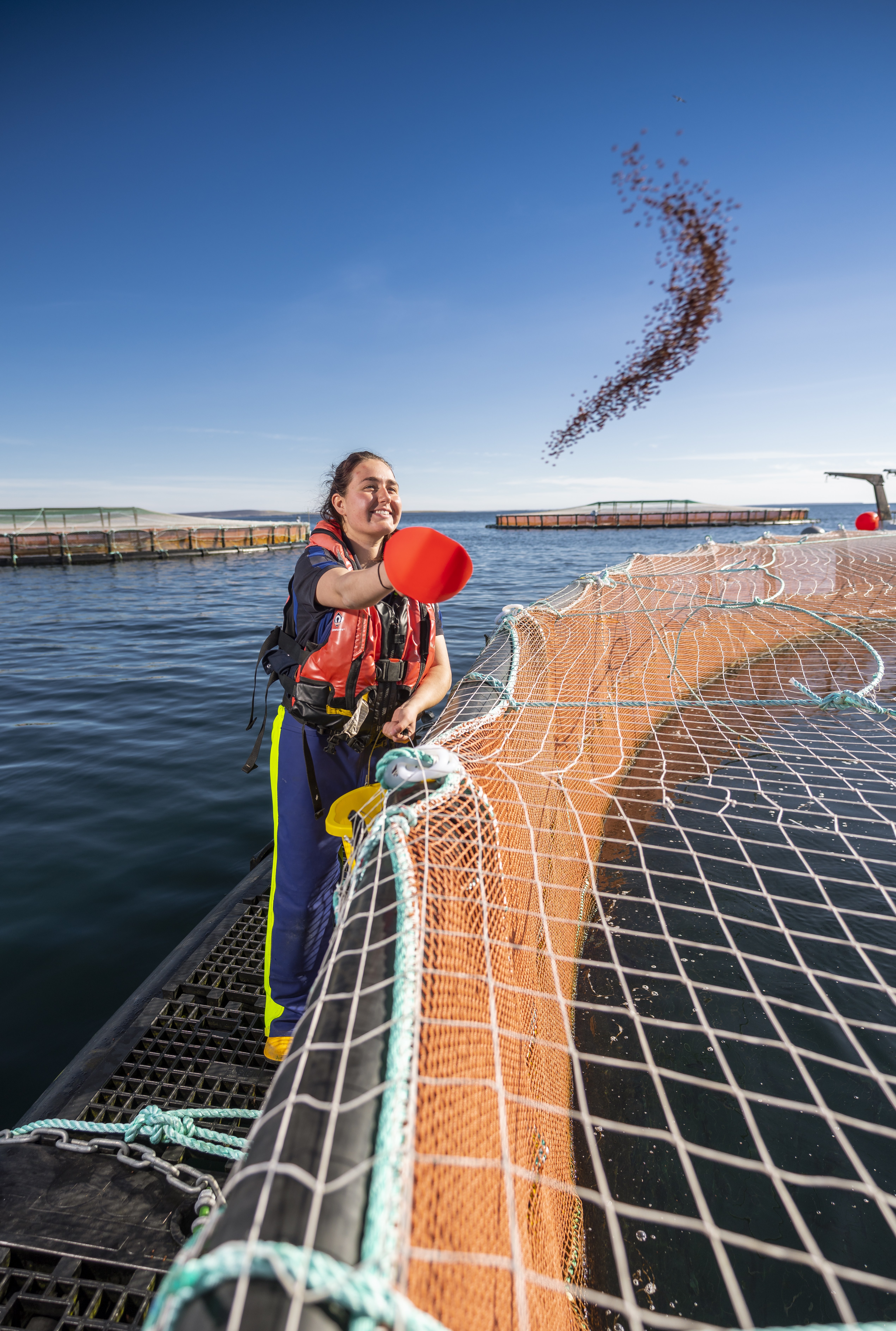
Salmon feeding
Alternative feeds
There are alternative options for feeding fish effectively, however. For instance, the possibilities of hemp – also known as the cannabis plant – are being investigated as a potential source of protein. In August 2023, the University of Stirling reported that the first live trials into using hemp to feed farmed salmon in Scotland had been successful. The next stage of the project, which has received more than £260,000 in funding from the UK Seafood Innovation Fund, will involve monitoring fish fed on hemp-seed protein as part of their diet.
Also, in February last year, a study by SalmoSim, a spin-out firm based at the University of Glasgow, found that waxworms fed on plastic waste are as suitable for feeding farmed salmon as other commercially available insect meals. The company said that further testing would be undertaken to ensure that salmon fed on plastic would be safe for humans to eat.
Other insects have been emerging as alternative protein sources for fish too, particularly fly larvae, which at the present time look like the best option for producing insect-based protein at scale. In December 2023, the Enorm biofactory, said to be northern Europe’s largest insect factory, opened in Denmark. The factory reported that it is set to produce more than 10,000 tonnes of insect meal annually, which it said could be used in place of fishmeal in the fishing industry.
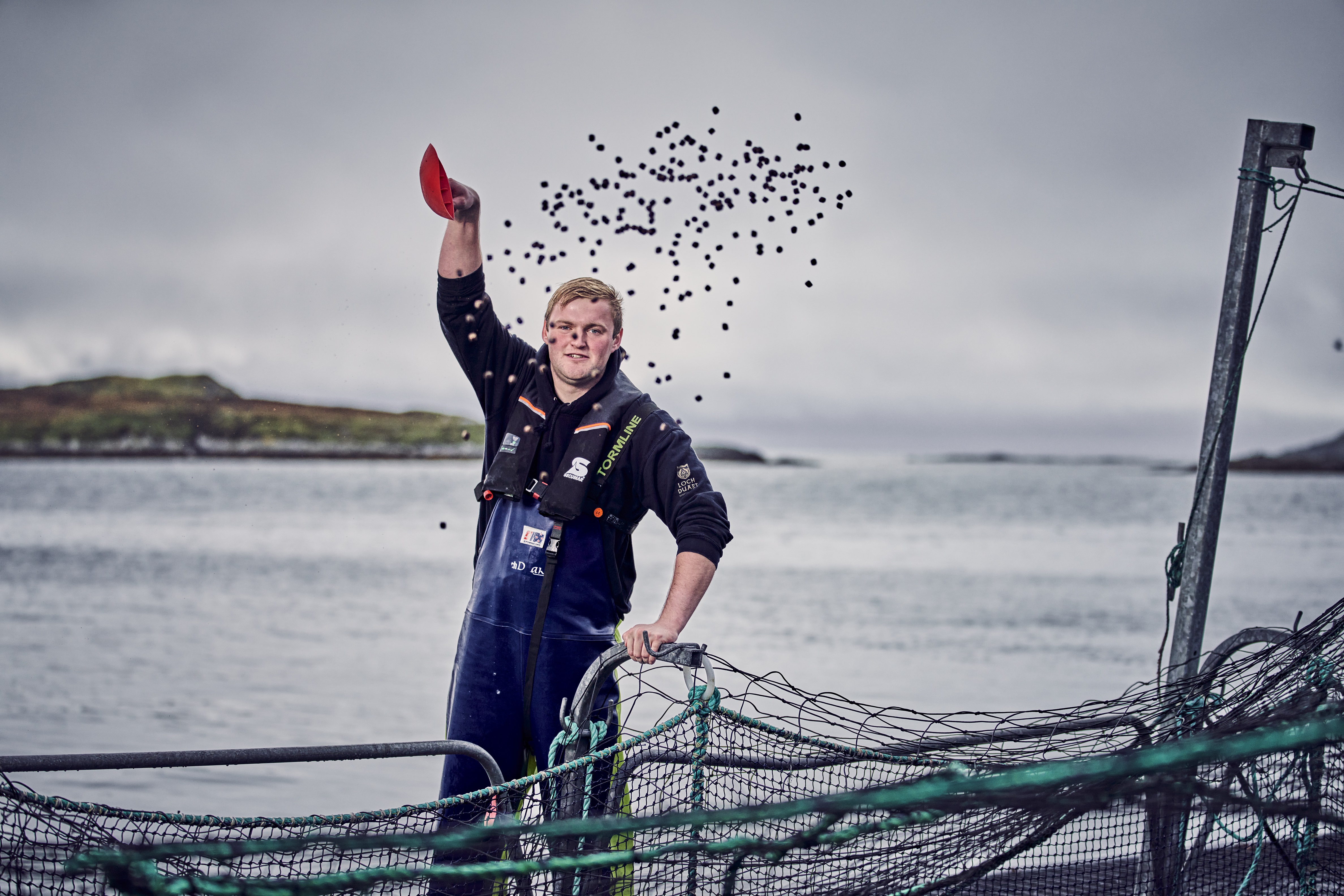
Loch Duart worker
feeding the salmon
Enorm is producing insect meal and insect oil from the black soldier fly, whose larvae are fed primarily with byproducts from the food industry. Around 12 days later, the larvae are processed into oil and protein. The factory expects to produce 100 tonnes of larvae per day.
Michel van Spankeren, Business Development Manager at insect-ingredients company Protix, says: “The use of insects, specifically the black soldier fly, as a sustainable source of protein and other nutrients, is a relatively new, yet natural and logical step in creating a positive footprint while maintaining high palatability and performance.
“The larvae are a rich source of protein and lipids. They quickly convert low-grade food waste into body mass. They need little room to grow and use less land than alternative sources of protein and lipids. They can be farmed close to where they are needed, thus reducing transport.
“There are clear indications that insect ingredients may be better for the health and welfare of aquatic animals, compared to ingredients such as soy – plant-based nutrients that carnivorous farmed species, such as salmon, are not designed to digest. These advantages have already been hinted at in a number of early studies and there is scope for these results to be reinforced in the near future, strengthening the possibility of fetching a price premium across the value chain.”
Buttle says that while the outlook is positive, it may take a while for some alternative protein sources to make their mark. “The landscape for alternative protein sources in aquacultures holds promise, with multiple options on the horizon,” she says. “Currently, insect meals have been the star in terms of capital investment in recent years, but there is not yet a clear indication that they will be used in bulk in standard fish feeds routinely in 2024.
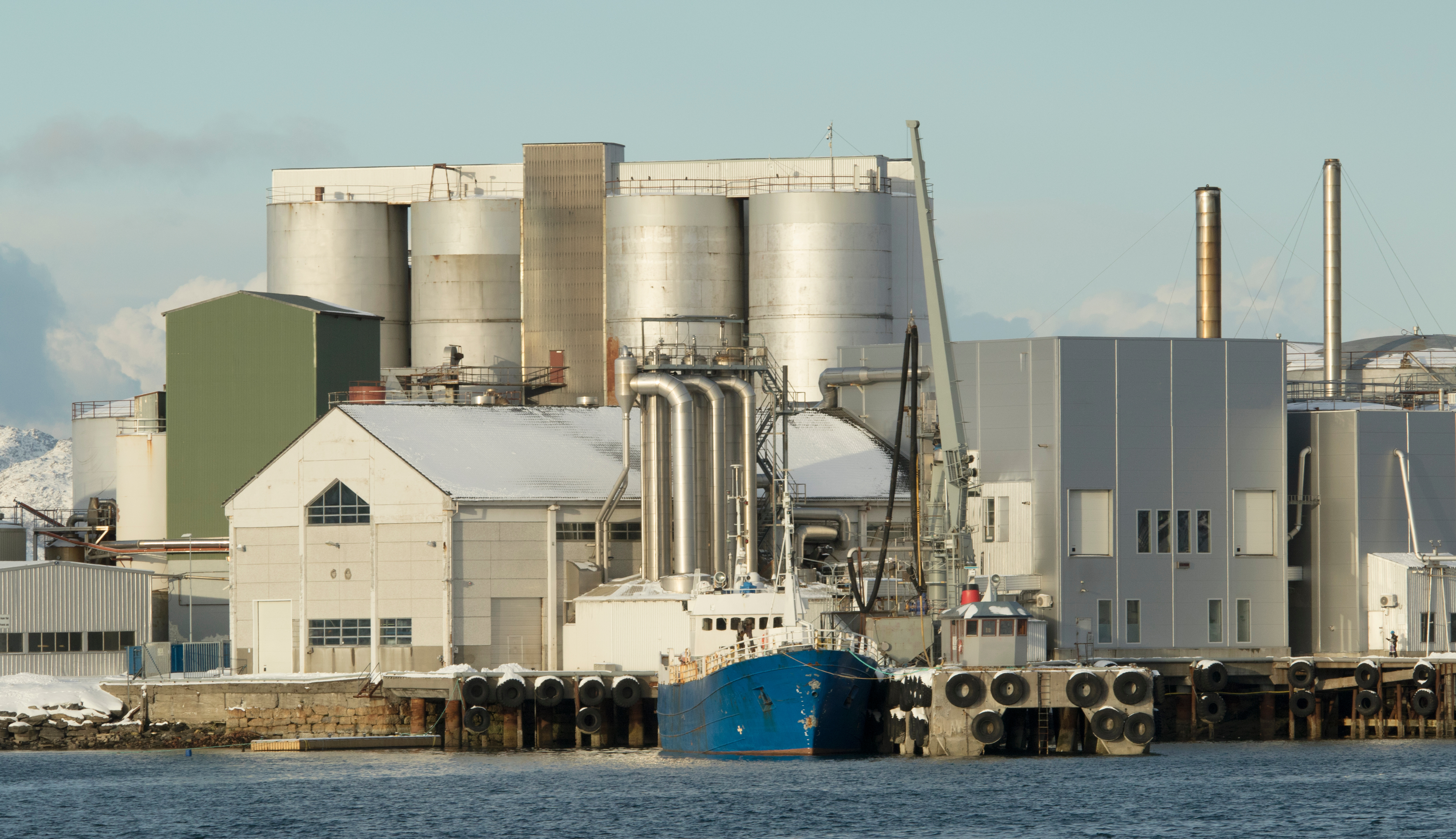
Fishmeal factory
“Single-cell proteins are another candidate and we have a product in development in this category, with the right nutritional properties and potential for scale.”
Arnesen says he hopes to see more alternative protein sources coming through more significantly in 2024. He explains: “We are not currently using the full spectrum of available high-quality protein sources.
“Fish farmers in Norway are being hesitant to use approved byproducts from land animal production, which is a stance they should reconsider. There are also some high-quality fermented vegetable protein products on the way, which we believe will be important new sources of protein.”

Black
soldier fly
A spokesperson for Mowi said the firm is always looking to widen its raw-materials basket, adding: “We are continuously testing emerging raw materials and will start using them if or when they tick all or most of the right boxes, which include: the required nutritional value; availability in sufficient volumes; a step forward in carbon-footprint terms; and cost-competitiveness.”
However, there may be a few issues to overcome for alternative protein sources, observes Henrik T Halken, Group Vice President at Aller Aqua: “The challenge can be the price. It’s often way above market price in the first years before production is scaled up.”
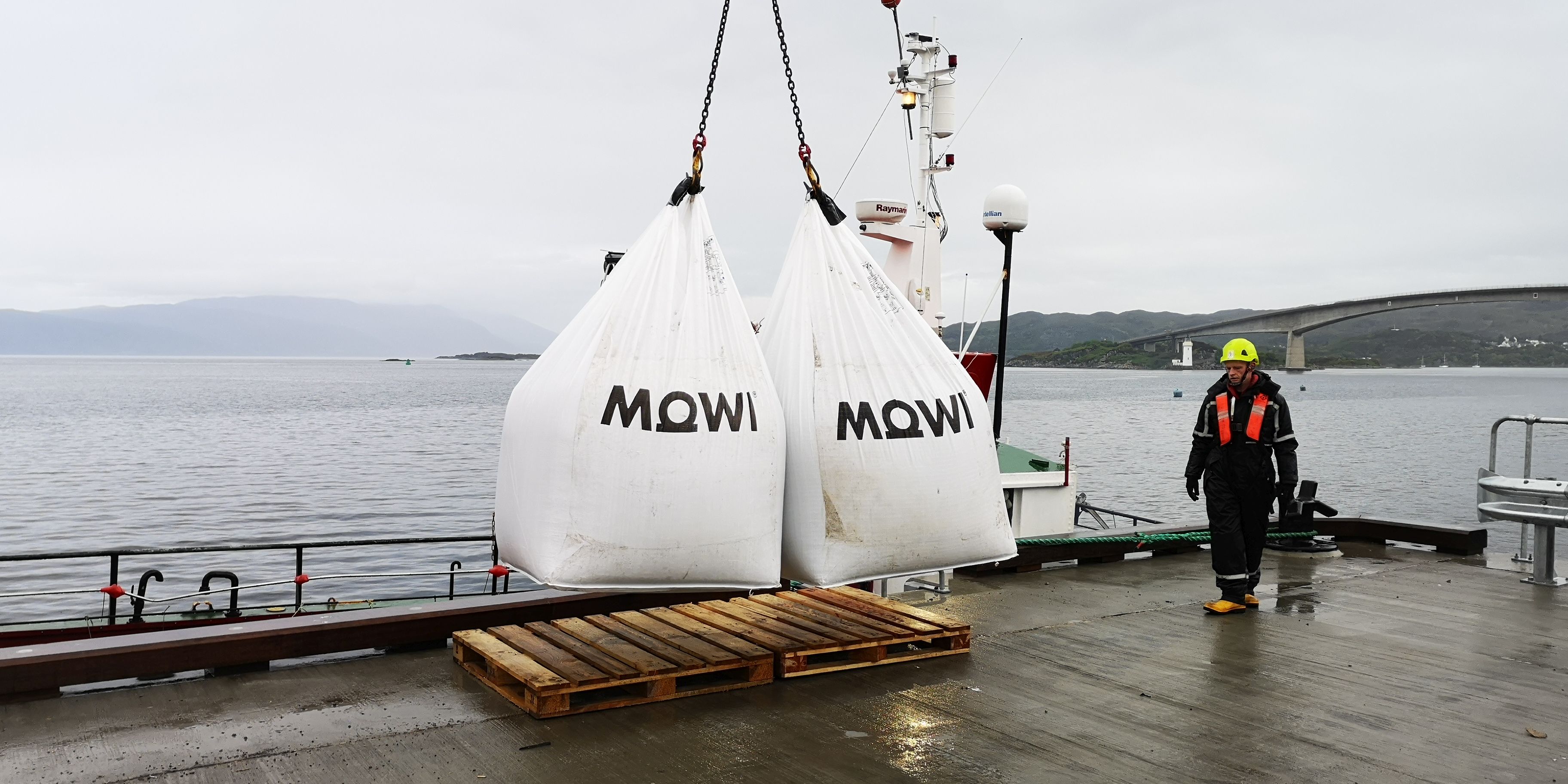
Mowi feed bags
Sustainability
Sustainability also looks set to remain high on the aquafeed industry agenda for 2024. Van Spankeren says: “CO2 emissions from feed are an eye-opening 57% of the aquaculture total, according to a 2020 study on quantifying greenhouse-gas (GHG) emissions from global aquaculture.
“As the demand on worldwide resources increases, the aquafeed industry increasingly recognises that ensuring sustainable sourcing is essential for its long-term survival. The challenge facing feed manufacturers is to reduce the environmental footprint of their feed while maintaining feed palatability and health benefits.”
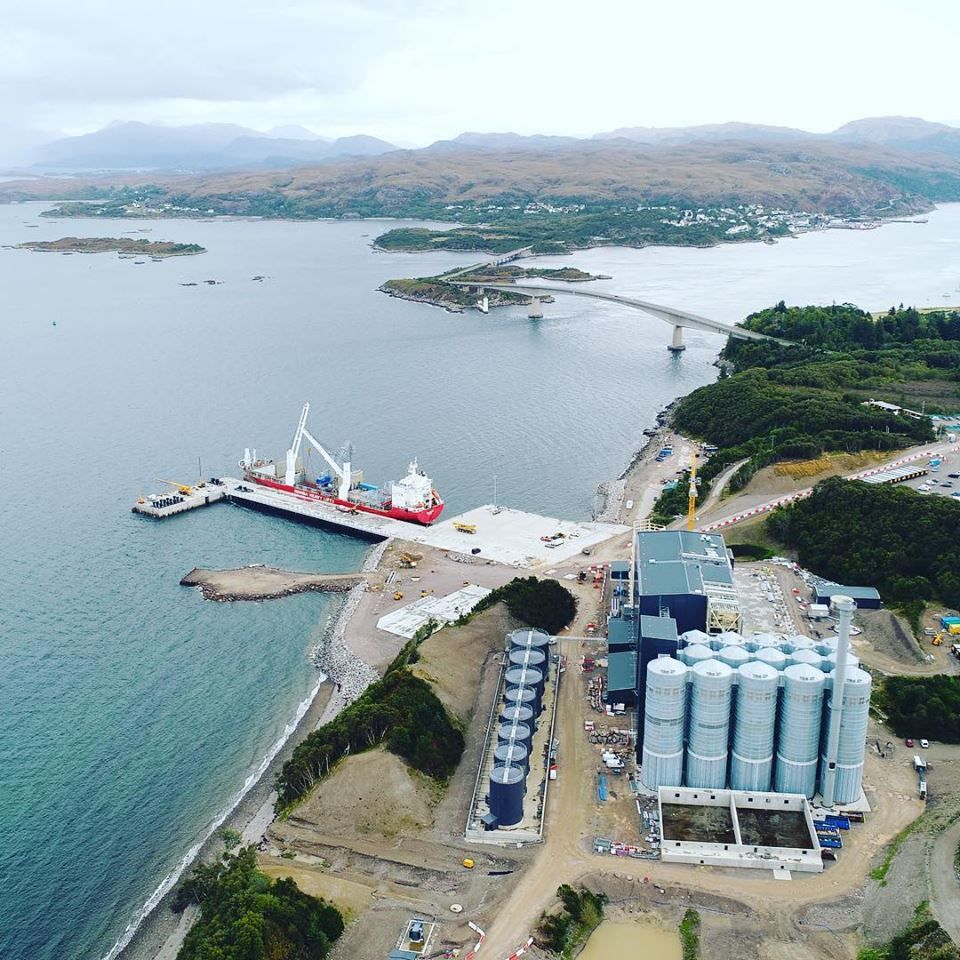
Mowi Kyleakin feed plant
And much effort towards this is already underway, as Dr Brett Glencross, Technical Director at IFFO, observes: “The main feed producers have announced ambitious targets in terms of reducing their products’ environmental impacts by 30% or more, covering not only carbon footprint but other categories as well, such as biodiversity impacts, land-use change and water use.
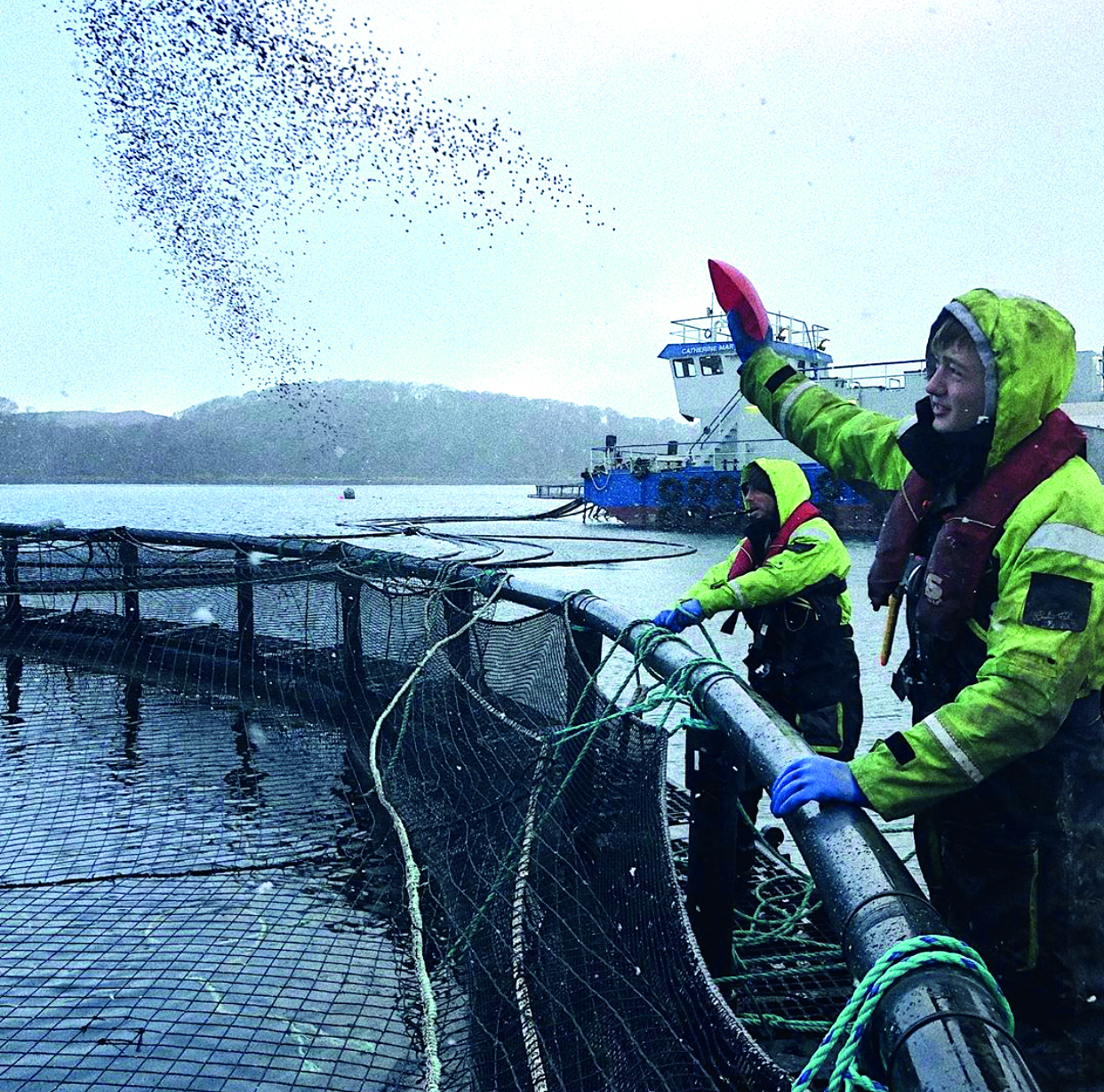
Kames fish feed
“In 2024, feed producers will be getting closer to the deadlines they’ve set for their sustainability targets, which are between 2023 and 2025. Marine ingredients contribute positively to feed producers’ strategies on environmental sustainability: according to GFLI’s [Global Feed LCA Institute’s] 2023 data, the carbon footprint of soybean meal and soy protein concentrate is respectively two and three times that of fishmeal.
“70% to 90% of the feed’s footprint is linked to the raw materials. Their sourcing is a key parameter and certification programmes assure that marine ingredients come from responsibly managed fisheries, which helps provide a level of independence in the use of sustainability claims. Furthermore, an increasing share of the raw materials used in the production of fishmeal and fish oil comes from byproducts, which have a lower carbon footprint than most of the other feed ingredients and make the most of materials already available, which have no food market.”
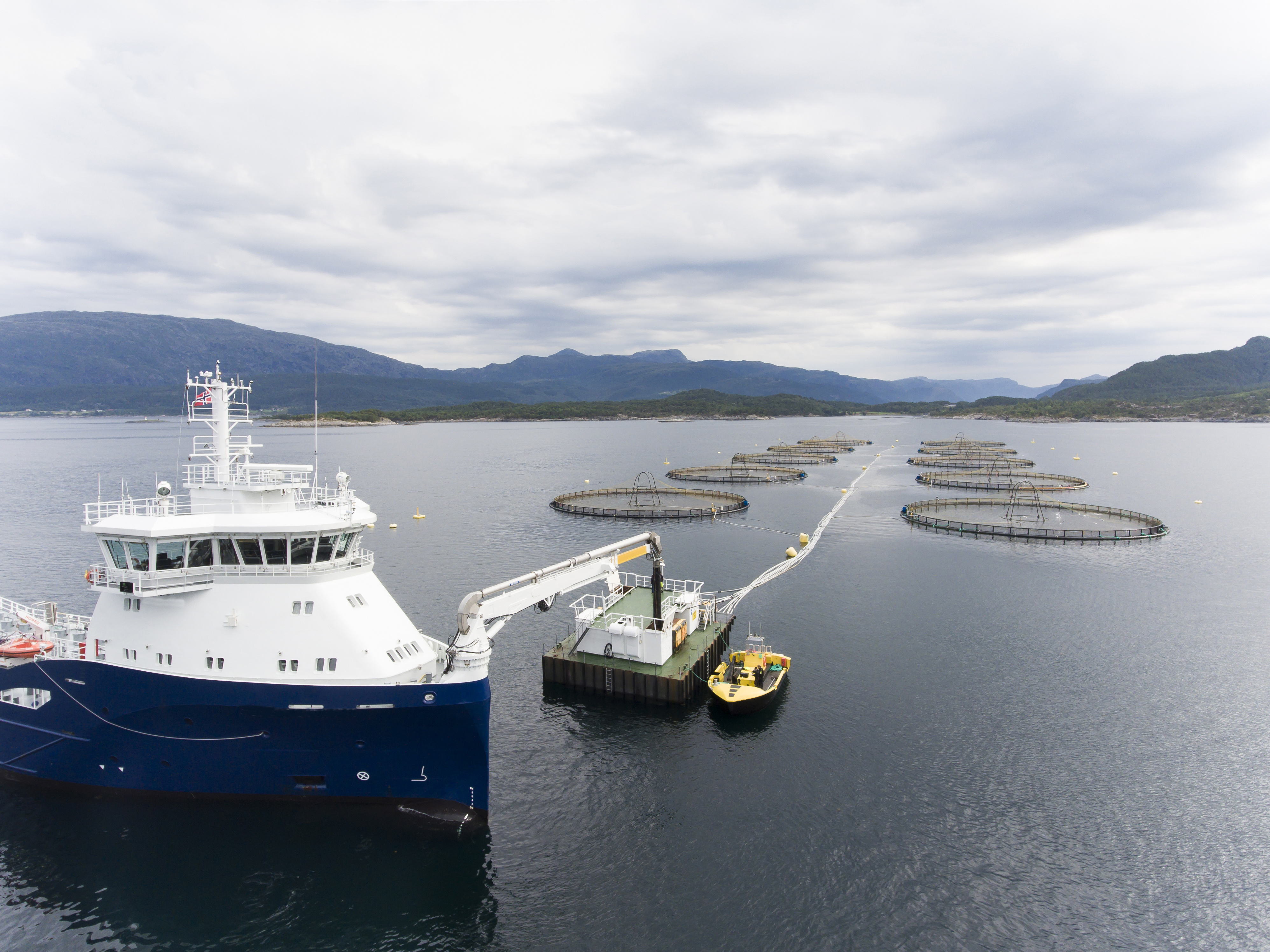
Supply vessel and feed barge
Dsm-firmenich’s Buttle also envisages that sustainability will become a higher priority. As she explains: “It will become increasingly important and sustainability KPIs [key performance indicators] will sit firmly within C-suite commitments, along with financial frameworks. At the end of the value chain, consumer and retailer attention on sustainable food is also set to intensify, through the use of eco-labelling and certifications for example.
“For aquaculture, there are many metrics that contribute to sustainability across the ESG framework. Notably, addressing GHG emissions has become a pivotal focus for industry leaders. Beyond GHG emissions, other critical environmental parameters such as water use, water scarcity, land use and biodiversity metrics are emerging as key indicators in evaluating the sustainability of the aquaculture industry.
“In addition, ESG credentials are poised to play an increasingly significant role when it comes to finance and the development of taxonomy, with a focus on seafood and aquaculture operations. Key drivers of sustainable aquaculture also include food loss and waste; fish health and welfare; and sustainable raw materials. In 2024, we will see a continued emphasis on the raw-material basket of aquaculture feeds and the development of alternatives or novel raw materials.”
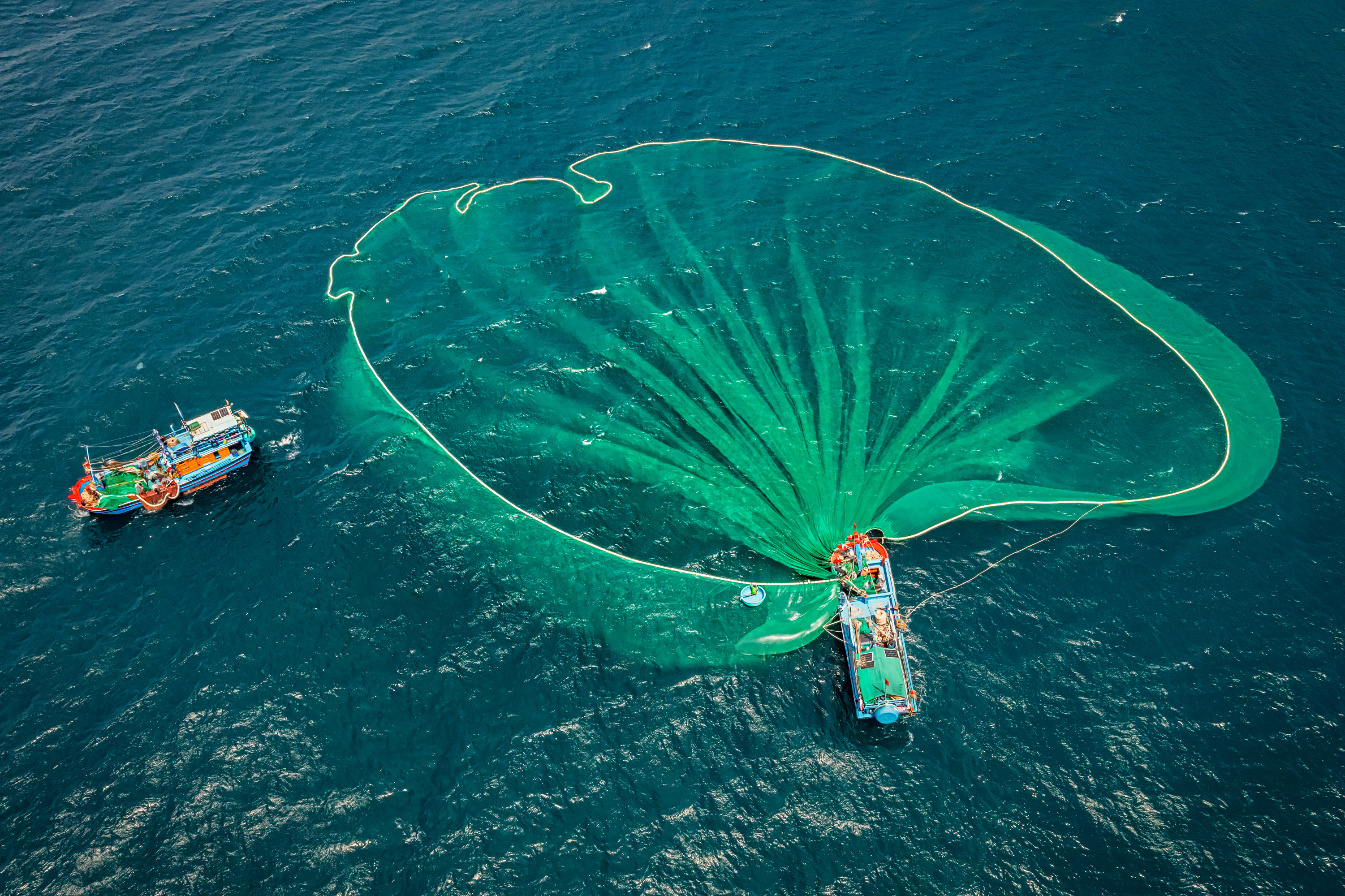
Anchovy fishing vessel
Arnesen adds: “Sustainability has an ever-growing importance in aquaculture, as it should. Even though farmed salmon already boasts a low carbon footprint compared to land-based animal protein, we can still do significantly better. Choosing feeds with better sustainability profiles are among the most efficient measures. Our sister company Polarfeed has formulated feeds using low-carbon raw materials. Today the carbon footprint of its products is an estimated 52% lower than the industry average.”
Next developments and new products
Looking ahead over 2024, at potential new developments and products, Glencross says: “We expect to see some additional capacity added into the algal oil space, but this probably won’t impact until beyond 2024. The fermented-grains production, building on the back of bioethanol byproducts, is scaling very well and is delivering hundreds of thousands of tonnes.
“Insect meals are still to make their way into the recipes for aquaculture. The delay in scaling is continuing and as with all ingredients, it is the market that will decide where the volumes will go. Looking at developments within the fishmeal and fish oil sector, the role of byproducts in marine-ingredient production seems to be outpacing everyone’s expectations. With 2.5 million tonnes of fishmeal and fish oil currently being made from byproducts, those low-CO2 materials are now quite mainstream and growing faster than insects, single-cell protein and algal materials combined.”
Thomas D’Alfonso, Director, animal and aquaculture at the US Soybean Export Council, notes that new versions of current products are also underway: “It’s important to consider that existing ingredients are undergoing enhancements, such as new soy products and corn concentrates.”
Any continuing uncertainty could drive further developments, as he concludes: “In times of unstable ingredient supply chains or when specific requirements, like those for aquaculture certifications, need to be met, the industry is likely to explore options to safeguard their operations.”
Delivery matters
As well as ensuring the raw materials for aquafeed are sustainable and affordable, another issue is how efficiently the feed is delivered to the fish. Feeding technology has moved on a long way from the days of hand feeding.
The series of Fish Farm Feeder solutions from Spanish-based Feeding Systems SL, for example, permit remote online assistance and remote monitoring of the feeder operation, controlled by an app and in a way that is compatible with a range of different software. The feeding systems cover all stages of growth for fish and shrimp, from the hatchery stage to grow-out at sea or in a land-based farm.
Finland’s Arvo-Tec offers smart technology for aquaculture with the aim of making the feeding process more efficient, while keeping the environmental load sustainable.
The company’s main focus lies in providing solutions for the constantly developing recirculating aquaculture systems sector.
Arvo-Tec’s range of products is focused around the fish feeding process that is essential during the whole lifecycle from start to finish, for trout, shrimp or other species.
Remote monitoring to ensure that the right amount of feed is being delivered to the fish is already being deployed by the big salmon farmers. A number of solutions are in development using artificial intelligence to further reduce the need for constant human monitoring.
Meanwhile, pellets are not the only way to deliver feed, especially for cleaner fish who prefer to nibble their food rather than compete with the much bigger salmon. World Feeds’ feed blocks, developed from those used for diverse species in aquariums, ensure that cleaner fish can feed in the way they prefer.


